In an ever expanding, ever evolving online world, living in an echo chamber is a route towards obsolescence (and so is designing with web 1.0 browsers and UIs in mind, but I digress). To truly compete in this dynamic environment means a regular influx of best known methods and ideas from leaders in their fields.
As a longtime consultant and friend of theirs, I can faithfully say: Intel gets this. Guided by their Director of Social Media Becky Brown, with air cover from their VP Global Marketing Strategy Nancy Bhagat, Intel organized “Be Social: Intel’s Global Social Media Conference” in Portland, Oregon last week. JESS3 Director of Strategy Brad Cohen and I enjoyed the privilege of representing JESS3, addressing just over 125 Intel employees from 8 countries.

Attendees enjoyed a broad spectrum of presentations, including one on social media / storytelling principles by Rohit Bhargava of Jesse’s alma mater Ogilvy, another considering the idea of “Pre-Commerce” and how to best engage people prior to their purchasing decision with Bob Pearson of WCG, and a talk about the most effective ways to utilize Facebook as a marketing tool given by Facebook’s own Aimee Westbrook. (Warning: I am in the early stages of developing a professional crush on her, she is whoa.)
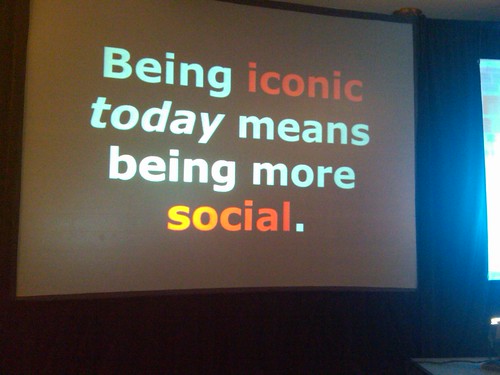
In other sessions, Lee Odden from TopRank helped to keep the crew grounded in terms of understanding the role of SEO and how social can be used to drive organic ranking and organic content discovery, while James Gross from Percolate helped explain content types — “stock” vs. “flow,” in his words — and how he’s betting on the future of content creation for most people being a more efficient leveraging of a personal context applied to someone else’s information. These were just a few of the many terrific speakers with whom Brad and I were delighted to share a stage.
For our part, we examined something we practice daily at JESS3: The art of social design. Having collaborated with Intel on a number of social design challenges, it was an extraordinary honor and an enriching experience to be apart of their summit.
The principle lesson that we expressed was that social media connectivity is not something that should be slapped onto a product at the end of its production. Social media is not merely a promotional tool. It is a design, development, and engagement tool. The most successful products are developed with social media in mind from start to finish.
As one would expect from an audience full of bright, engaged social media pros like those at Intel, the response to our presentation was immediate and intelligent. In addition to a deluge of tweets about our presentation, the folks at Intel demonstrated their savvy and engagement with smart in-person questions. One person even recognized that the statistics we shared regarding browser popularity were limited to a U.S. audience, and thus could have been interpreted as under-reporting the international popularity of Internet Explorer. So smart! (Though, to be fair, I really think browser usage can best be summed up by this).
In the wake of “Be Social,” our slide deck earned over 20,000 views on SlideShare within hours of posting it (seems we’ve struck a chord). Brad and I felt confident in our presentation, but it would be disingenuous if we said that this flood of attention was not at least somewhat alarming. As we chatted about it, though, Brad keenly observed that the strength of a presentation like this is its practicality and generality. The questions we suggested that Intel employees ask are the very questions we confront at the outset of every project that we take on at JESS3. By not trying to solve an isolated problem for a specific designer in our presentation, we produced a set of ideas and inquiries that apply broadly to anyone tackling a design project incorporating social media.
Sharing our expertise before Intel employees from across the world was a unique opportunity. Attendees composed a sizable percentage of the social media strategists and practitioners for the vaunted company. Additionally, the crowd being composed almost exclusively of Intel employees produced an environment marked by its transparency and collegiality. People arrived at “Be Social” ready to share, learn, and question one another openly, fostering a safe and educationally rich space.
And, on a personal note, connecting with old friends, mentors and co-conspirators like Ken Kaplan, Bryan Rhoads and Ekaterina Walter — as well as being continually in awe of the hustle and power women like Renee Edwards and Becky Brown dedicate to their work — was the biggest value for me.
And, perhaps the best advice came not in the form of a brilliant deck from another speaker or even a point Brad and I made, but from another Intel’er I admire: “Run fast. Don’t just be good, be great. I’ve got your back.” Nancy Bhagat, I look forward to quoting you and learning more from you for years to come.
Disclosure: JESS3 works with two companies referenced in this post: Intel and Facebook.
Tags: Aimee Westbrook, Be Social, Bob Pearson, brad cohen, design, facebook, intel, leslie bradshaw, ogilvy, Portland, Pre-Commerce, PreCommerce, Rohit Bhargava, social design, socialmedia, WCG
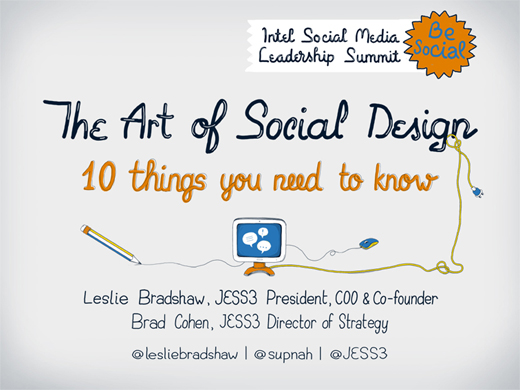
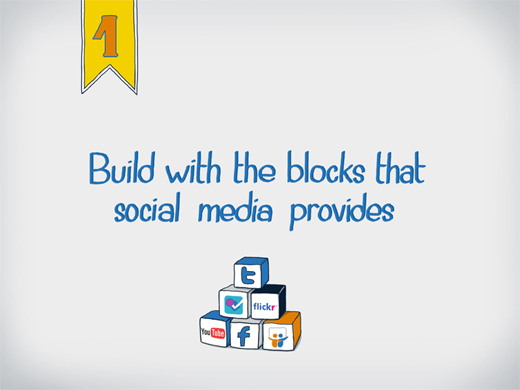
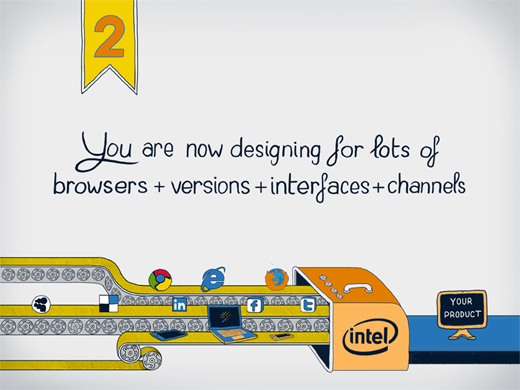
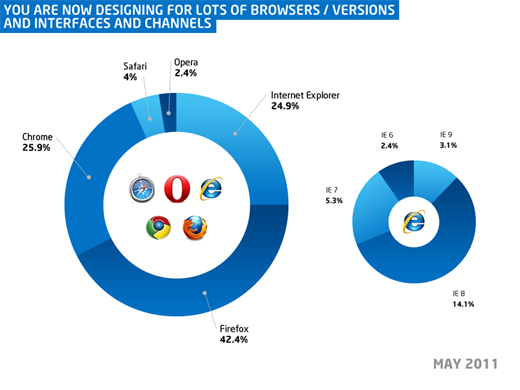

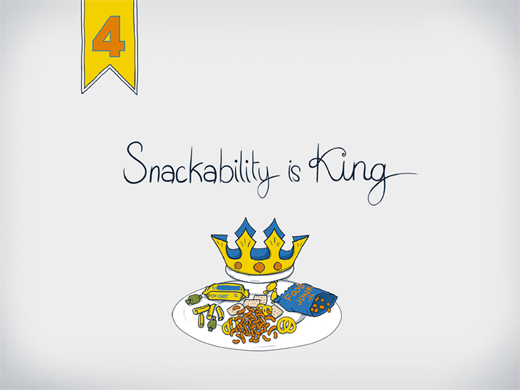
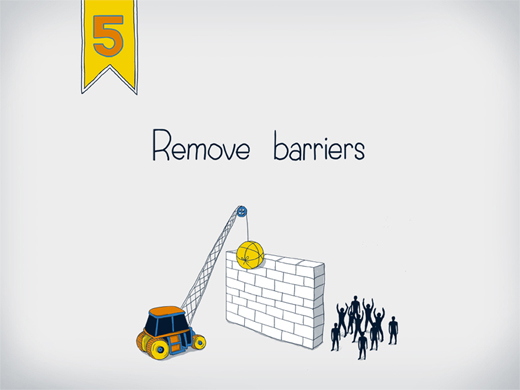
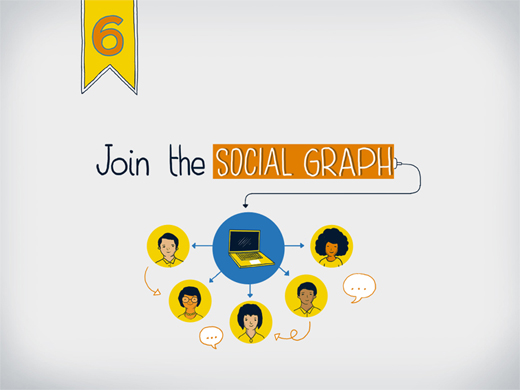
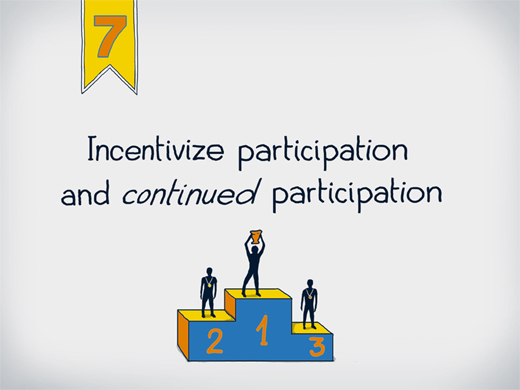
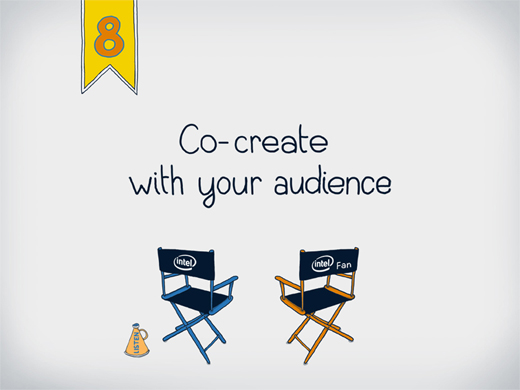

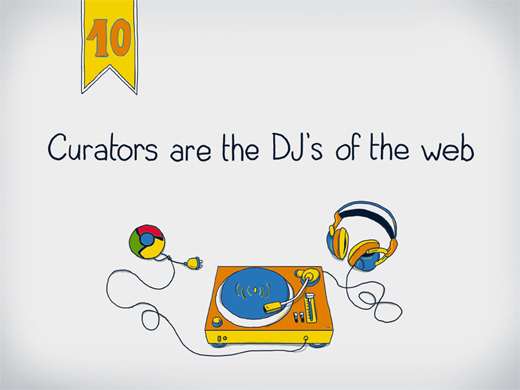
Join the Conversation